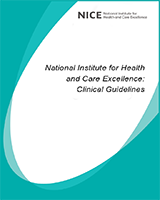From: Chapter 41, Cost-effectiveness analyses

NCBI Bookshelf. A service of the National Library of Medicine, National Institutes of Health.
| Question | Comments |
|---|---|
| Which outcomes are affected by weekend admission? |
|
| Which studies best show the effect and could inform the model? |
Mortality Alameda 2009 is in a very specific population (congestive heart failure and cardiac arrhythmia patients), which may not be generalisable to other patient groups and also is of low quality and should therefore not be used. Evidence from Stowell 2013 is of very low quality. This study compared control cases with outlying patients using a matched pair design based on age, sex and reason for admission. However, it is likely that patients who are less severely ill are admitted to outlying wards and are therefore less likely to die, so the study may have underestimated the effect of outlying status on mortality. Perimal-Lewis 2013 and Serafini 2015 were the best quality studies (moderate) and were in a more generalisable population. The effect sizes seem realistic and had no serious imprecision. These studies should be used to inform the economic model. These studies showed a modest but expected increase in mortality for medical outliers. This could be an underestimate though due to the nature of the observational studies where the more acutely ill patients are less likely to be medical outliers. Severe adverse events Santamaria 2014 was the only study to adjust for all 3 confounders and was moderate quality and no serious imprecision around the point estimate. Serious adverse events were defined as call outs for the emergency medical team. It is likely that medical emergency teams are variable in staff makeup both nationally and internationally. Therefore the evidence may not be generalisable to the UK. Evidence from Stowell 2013 is of very low quality. This study compared control cases with outlying patients using a matched pair design based on age, sex and reason for admission. However, it is likely that patients who are less severely ill are admitted to outlying wards and are therefore less likely to require transfer to the ICU, so the study (which showed no effect of outlier status) may have underestimated the effect of outlying status on serious adverse events defined as transfer to ICU. Alameda 2009 is in a very specific population (congestive heart failure and cardiac arrhythmia patients), which may not be generalisable to other patient groups and also is of low quality with serious imprecision around the point estimate and should therefore not be used. The subgroup considered that overall, there appears to be an increase in serious adverse event rate in outlying patients. Length of stay Alameda 2009 is in a very specific population (congestive heart failure and cardiac arrhythmia patients), which may not be generalisable to other patient groups. However, the study was the only one to report mean differences in length of stay and provided moderate quality evidence. The evidence suggested that outlying patients have a longer length of stay, which the subgroup felt fitted with clinical experience. However, the results of this study may not generalisable to the entire AME population, as these patients may require specialised tests prior to discharge, which are more difficult to arrange from an outlying ward. The subgroup expected an increase in length of stay for medical outliers as these patients are seen less and it will take longer for them to be discharged, however this increase is difficult to quantify from the evidence. |
| Other considerations |
Patients perspective: For patients, being on a ward that doesn’t specialise in their condition is associated with feelings of anxiety and fear that they will not receive the best treatment or that they are being forgotten by the appropriate specialists. In some circumstances, patients can feel embarrassed if they have a different condition from other patients on the ward as the other patients may not understand their symptoms. It may also be emotionally insensitive to board certain patients in certain wards. Patients would like there to be recommendations in place to aid outlying patient care. |
From: Chapter 41, Cost-effectiveness analyses

NCBI Bookshelf. A service of the National Library of Medicine, National Institutes of Health.